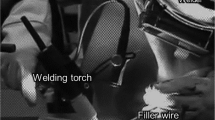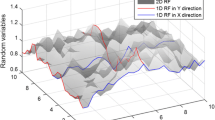Abstract
Hybrid simulation method is an advanced visualisation technique of directly invisible nugget formation process in welding and joining. The system consists of two parts: a sensing part of monitoring data during welding, and a numerical simulation part with the monitoring data as the input. Both part collaboratively work to predict the welding state history so that the simulated result outputs as visualised data of the invisible nugget formation process. It works as an in-line quality management system. This report introduces a result applied for this method to resistance spot welding. There are two types of hybrid simulation systems described. One is an ordinary type with grid mesh system that can output the temperature distribution in workpieces and electrode tips as well as current distribution etc. The other is a reduced high-speed system based on a reduced model developed with an integral form that can run as in-line real-time observer, but predicts only mean weld temperature and weld diameter. The sensing parts are the same for both systems. Both systems work well to visualise the invisible welding state.
Similar content being viewed by others
References
Bentley K.P., Greenwood J.A.: Temperature distribution in spot welds, British Welding Journal, 1963, 10, No. 12, pp 613–619.
Okuda T., et al.: A study of spot welding of heavy gage mild steel, International Institute of Welding, Doc. IIW-376-71 (ex. Doc. III-389–70), Welding in the World, 1971, Vol. 9, No. 7/8, pp. 234–255.
Nishiguchi K., Matsuyama K.: Influence of current wave form on nugget formation phenomena when spot welding thin steel sheet, Doc. IIW-889-86 (ex. Doc. III-805–85), Welding in the World, 1987, Vol. 25, No. 11/12, pp. 222–244.
Zhang W., Jensen H.H, Bay N.: Finite element modeling of spot welding similar and dissimilar metals, Proc. of Seventh Int. Conf. on Computer Technology in Welding, pp. 364–373.
Li M.V., Dong P., Kimchi M.: Finite element modeling of resistance spot welding of galvanized steel, Proc. of Seventh Int. Conf. on Computer Technology in Welding, pp. 389–398.
Babu S.S., Riemer B.W., Santella M.L., Feng Z.: Integrated thermal-microstructure model to predict the property gradients, Proc. of Sheet Metal Welding Conference VIII, 1998, paper 5–2.
Matsuyama K.: Modeling of nugget formation process in resistance spot welding, Proc. of Seventh Int. Conf. on Computer Technology in Welding, pp. 486–495.
Matsuyama K., Sato H, Nishiguchi K.: Computer-aided monitoring system of nugget formation process, Proc. of Fifth Welding Symposium of Japan Welding Society, 1990, pp. 577–582.
Matsuyama K.: Real time visualization of welding state in spot welding, Proc. of Ninth Int. Conf. on Computer Technology in Welding, 1999, pp. 3–14.
Matsuyama K., Obert R., Chun C.H.: Inverse method for measuring weld temperatures during resistance spot welding, SAE, SP-1621 Spot Welding & Weld Joint Failure Processes, 2001-3, pp. 131–137.
Matsuyama K., Obert R., Chun C.H.: A real-time monitoring and control system for resistance spot welding, The Society of Manufacturing Engineers, Technical Paper AD 02–270, 2002.
Author information
Authors and Affiliations
Rights and permissions
About this article
Cite this article
Matsuyama, K. Hybrid Simulations for In-Line Visualisation of Welding State in Resistance Spot Welding. Weld World 50, 14–23 (2006). https://doi.org/10.1007/BF03266520
Published:
Issue Date:
DOI: https://doi.org/10.1007/BF03266520




